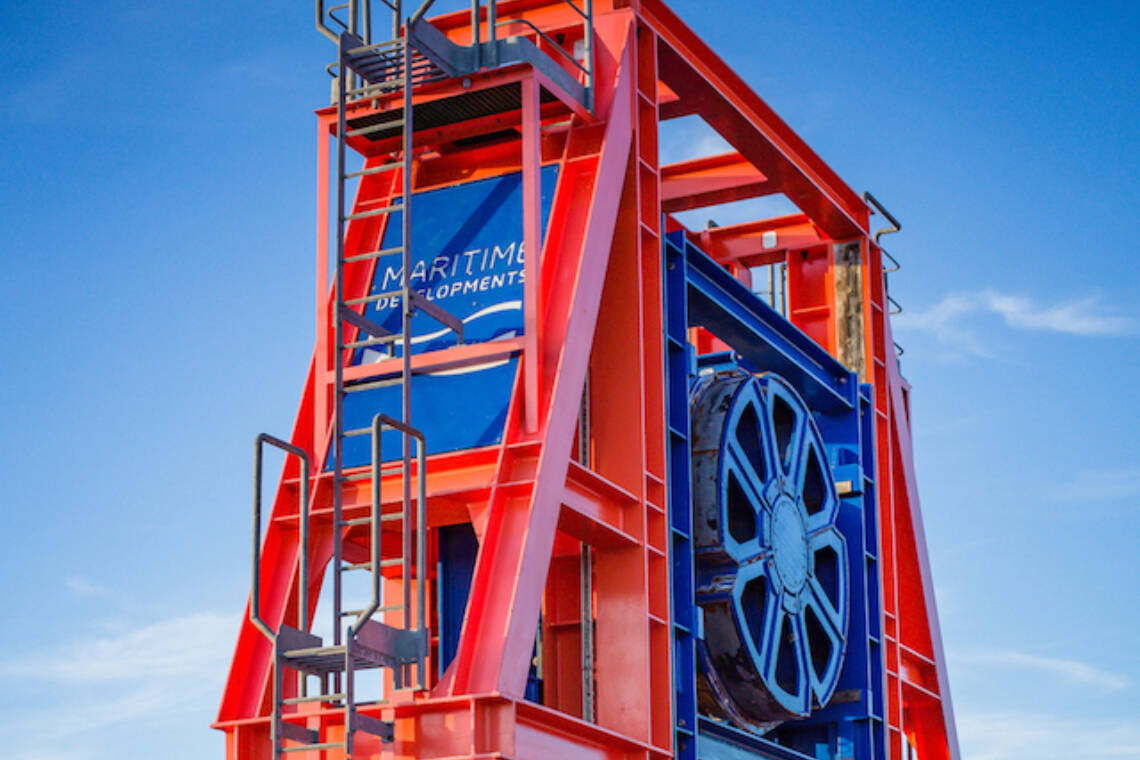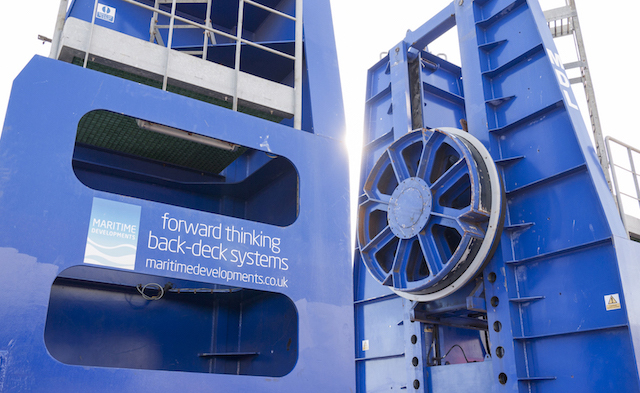800 Tonnes of Innovation

Not long after delivering the most innovative reel drive system yet, Maritime Developments is introducing an even more versatile and cost-effective solution to the flex-lay market.
When the inaugural third-generation RDS successfully completed its maiden project in late 2015, it quickly became the in-demand flex-lay solution of MDL clients. The unparalleled compact footprint and minimum sea-fastening have proven to reduce vessel time in port and mission time at sea, resulting in a tangible cost saving for the operator.
Now, MDL is expanding the design to allow for scaling up of the system – which will mean an upgradable RDS that could handle any reel weight up to 500 or 800-tonne. In other words, one system for varying project requirements.
“Innovation is ingrained into our DNA, so once we demonstrated that the third-generation concept did exactly what it promised, we couldn’t stop there,” said Derek Smith, MDL CEO.
“It was clear the system was the preferred solution for the industry, but the 350-tonne unit that we launched doesn’t cater for all the clients that would like to use it.
“We knew that the key to true cost savings in flex lay is versatility, so we looked at how we could develop the third-generation concept to work on a wider range of projects – and we came up with this latest design iteration.”

The system can be upscaled or downscaled for individual projects by removing or adding modular sections to meet the individual project requirements.
Over the years, the company had developed the original reel drive system into an actual money-saving machine, making it easier and safer to use than ever before.
By making the towers self-supporting (eliminating the need for the towers to be chained together), as well as introducing wireless remote control, an automated raising and lowering system and automated clamping system, MDL was able to improve on the equipment’s efficiency when operating reels or moving between reels – effectively introducing the second-generation RDS.
But when the oil price crash led many of the company’s clients to seek effective cost reduction, close discussions identified areas where further time saving could be achieved, to deliver reduced mission costs.
With a slimmer base and the HPU integrated into one of the towers, the third-generation RDS takes up less space on deck, allowing for more product to be carried on board, or for the use of a smaller vessel. While with the cradles and chain lashing points integrated into the tracks, the reel mobilisation is quicker at port and offshore.
These unique cost-saving features are reinforced in the new RDS design, set to benefit a larger number and type of projects, without the system ever leaving the deck, or using any vessel of opportunity – but only when required.
Find out more about the MDL RDS on this dedicated page.
- April 2024MDL supports Saipem on Greece INGS
- January 2024Preparation is key to a long life subsea
- January 2024Forward thinking with Holland
- January 2024Ensuring peak performance for FPSO and platform owners in 2024
- December 2023Reducing the risk of cable failures








